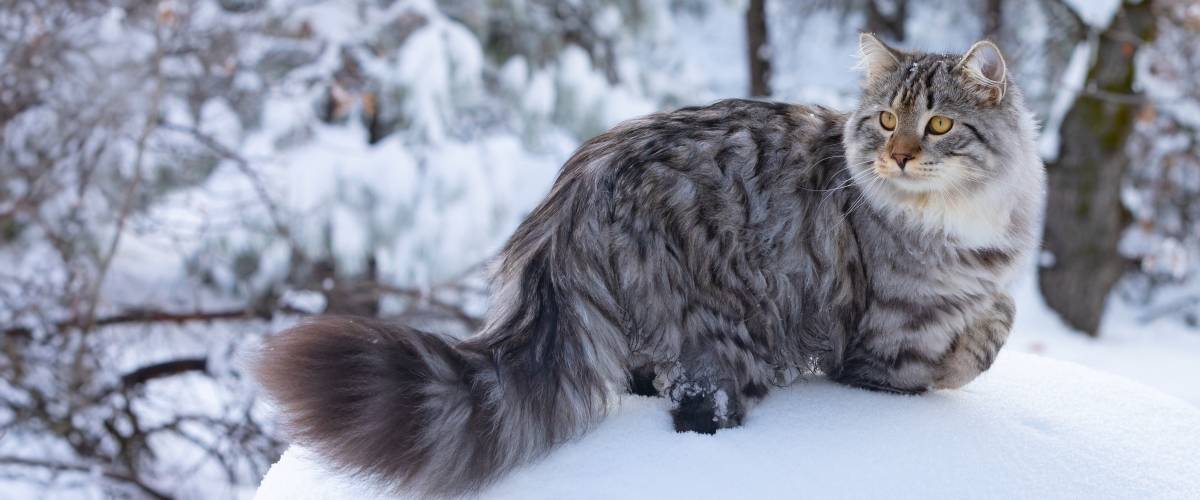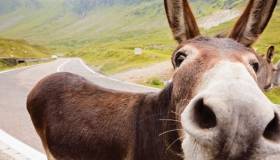
Updated November 9, 2023 – Cats’ fastidious behavior when it comes to poop makes it easy to clean up. It can also mask changes in stool that would signal a potential health problem. Although diarrhea is less of a problem in cats than dogs, there are some similarities between the two species regarding underlying causes and a few differences.
Location, Location, Location – Where Diarrhea Originates is Important
As a rule, veterinarians divide diarrhea into two broad categories based on where in the intestinal tract the diarrhea originates – small bowel (originating in the small intestine) and large bowel (originating in the large intestine).
Each portion of the gastrointestinal tract is vital in nutrient digestion and absorption. The functional aspects of each part of the GI tract impact diarrhea – in other words – when there is damage, irritation or inflammation, the cells react in ways already programmed into their function. Still, the response can be inappropriate and result in diarrhea. Remember this as we discuss signs of diarrhea and the site of origin.
The stomach and small intestine are the primary sites of digestion and absorption of nutrients. It’s important to remember that the gall bladder, liver and pancreas also are involved in digestion by providing substances that help in digestion. Although ingested material never enters any of the structures, abnormalities in these organs can result in diarrhea.
The large intestine is where water and electrolytes are balanced, and – to put it crudely –stool is stored before leaving the body. The large intestine also produces mucous that helps stool pass.
Stool Characteristics Are Key to Making a Diagnosis
Although gross, paying attention to the stool quality can give your family veterinarian valuable clues to point them toward a diagnosis and best treatment.
Characteristics of small-bowel diarrhea include:
- Large volume
- Watery/very loose consistency
- Frequency might or might not be increased
Diseases that cause small bowel diarrhea in cats include intestinal viruses, intestinal parasites, cancer, hyperthyroidism and chronic enteropathy (inflammatory bowel disease).
Characteristics of large-bowel diarrhea include:
- Small volume
- Usually semi-formed or cow-patty consistency
- Increased frequency of defecation with straining
- Often contains mucus
Diseases that cause large bowel diarrhea include stress colitis, intestinal parasites and megacolon (more on this condition later).
Sometimes, we can see small and large bowel diarrhea characteristics in a cat. This can occur when a disease involves both the small and large bowel. We also can see this pattern when a patient starts with small bowel diarrhea that causes secondary irritation of the large bowel.
Some cats with diarrhea also have concurrent vomiting. Vomiting is more common with small intestinal diarrhea (and the causes of small intestinal diarrhea). Still, some studies suggest that as many as 30% of cats with large intestine problems will vomit, too.
A Quick Note About Blood in the Stool
Blood in the stool can be noted in small and large bowel diarrhea. Blood in the stool can take several forms:
- Digested blood from the stomach or small intestine results in black, tarry stools. This can be a challenge to diagnose in cats since their stools are usually darker in color.
- Fresh streaks of blood mixed in the stool or coating the stool usually indicate a large bowel problem
Why Talk About Constipation in Cats?
Although we’re discussing diarrhea, we must discuss a disease seen almost exclusively in cats: megacolon. This disease begins when cats become constipated, and the large intestine stretches but loses tone, which leads to more constipation. Cats often leak a little loose stool around the hard feces, which a cat owner can interpret as diarrhea. Megacolon is easily diagnosed on a physical examination and via X-ray.
What Do I Do If My Cat Has Diarrhea?
If your cat has diarrhea, call your family veterinarian for guidance. Providing them with the information described above can help your veterinary care team decide on next steps.
The good news is that in many cases, the loose stools will resolve without treatment or with simple diet adjustments. Your family veterinarian is the best person for more complex issues to help decide if and when further diagnostics or treatment is needed.
How You Can Help This Holiday Season
GI problems are one of the most common reasons cat owners seek veterinary care, but there is a lot we still don’t know. Your gift can make a difference for the thousands of cats affected by GI disease each year. It gives veterinarians the tools they need, including better diagnostics and treatments, to provide the best care for their feline patients. If you donate now, our Board of Trustees has pledged to match the donation up to $200,000!
We also have holiday cards that supporters can order for friends and family. These cards are eligible for the Board of Trustees matching gift and are a great way to spread joy while supporting life-changing health studies for cats everywhere.
Connect with us on social media platforms like Facebook, TikTok or Instagram to help amplify our mission in advancing animal health breakthroughs. Your support in following, sharing and donating will make a significant impact!
Resources:
- Fresh Scoop podcast Episode 40: The Amazing Science of Fecal Microbial Transplantation
- Fresh Scoop podcast Episode 32: Everything You Wanted to Know About Fiber But Were Afraid to Ask
- Morris Animal Foundation webinar “What number two can tell you”
- A clinical index for disease activity in cats with chronic enteropathy
- Dysbiosis index to evaluate the fecal microbiota in healthy cats and cats with chronic enteropathies




